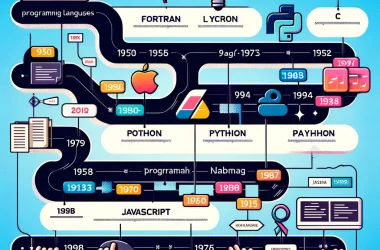Assembly Language: Bridging the Human-Computer Divide
Introduction:
Assembly language, a low-level programming language, acts as a bridge between human understanding and the binary language of computers. It allows programmers to interact with hardware components directly and manipulate machine instructions in a comprehensible form.
Historical Context:
In the early days of computing, programmers wrote instructions directly in binary code, which was extremely tedious and error-prone. Assembly language emerged as a solution, providing a mnemonic structure that made it easier to read, write, and debug code.
Structure of Assembly Language:
Assembly language programs consist of two main sections:
- Instruction Mnemonics: Short, human-readable codes that represent specific machine instructions (e.g., ADD for addition, MOV for data movement).
- Operand Specifications: Values or memory addresses that indicate where the instructions should operate on data.
Benefits of Assembly Language:
- Direct Access to Hardware: Assembly language provides direct control over hardware components, allowing programmers to optimize performance and utilize specific features.
- Efficiency and Speed: Assembly code is converted directly into machine instructions, resulting in faster execution speeds compared to high-level languages.
- Compact Code: Assembly language programs are typically more compact than equivalent high-level code, making them suitable for embedded systems with limited resources.
Applications of Assembly Language:
Assembly language is primarily used in:
- Operating System Kernels: Low-level drivers and system functions that require direct hardware interaction.
- Embedded Systems: Microcontrollers and other devices with limited resources where performance and efficiency are crucial.
- Real-Time Systems: Applications where timing and accuracy are critical, such as industrial control and robotics.
Learning Assembly Language:
Learning assembly language requires a thorough understanding of computer architecture, machine instructions, and data representation. Common resources include:
- Textbooks: Comprehensive guides that cover the basics and advanced concepts.
- Online Courses: Interactive and hands-on tutorials available on platforms like Coursera and edX.
- Documentation: Processor manufacturers and software vendors provide detailed manuals and references.
Conclusion:
Assembly language remains an essential tool for programmers who need to bridge the gap between human understanding and the intricate workings of computer systems. By providing direct access to hardware and enabling efficient code generation, it empowers developers to create optimized and high-performance applications.
Executive Summary
Assembly language is a low-level programming language that bridges the gap between human-readable code and machine code. It allows programmers to interact with the computer on a more fundamental level, enabling them to optimize performance, control hardware, and create more efficient programs.
Introduction
As computers have become more complex and ubiquitous, the need for a language that can efficiently translate human intent into machine-executable instructions has become increasingly important. Assembly language, a powerful and versatile programming language, fills this role. It empowers programmers with the ability to interact with computers at a granular level, offering precise control over hardware and performance.
FAQs
- What is the difference between assembly language and machine code?
Assembly language is a symbolic representation of machine code, making it easier for humans to read and write. - Why is assembly language still used today?
Despite the availability of higher-level languages, assembly language remains valuable for performance-critical applications, embedded systems, and hardware control. - Is assembly language difficult to learn?
Assembly language syntax varies depending on the specific processor, making it a specialized skill to master.
Subtopics
1. Instruction Set Architecture (ISA)
- Defines the instructions that a particular CPU can execute.
- Includes opcodes, addressing modes, and register usage.
- Examples: x86, ARM, MIPS
2. Assembly Language Syntax
- Consists of mnemonics, labels, directives, and comments.
- Each instruction follows a specific format.
- Examples: MOV, ADD, JMP
3. Registers and Memory
- Registers are special high-speed memory locations within the CPU.
- Memory is used to store data and instructions.
- Understanding register usage and memory addressing is essential for efficient assembly code.
4. Assembly Programming Techniques
- Looping: Repeatedly executing blocks of code.
- Conditionals: Branching execution based on certain conditions.
- Subroutines: Reusability of code through procedures.
5. Interfacing with Hardware
- Assembly language provides direct access to hardware devices.
- Allows for control of peripherals, such as ports, timers, and interrupts.
- Enables efficient handling of real-time events.
Conclusion
Assembly language stands as a bridge between the abstract world of human-readable code and the concrete world of machine-executable instructions. It empowers programmers with the ability to optimize performance, interact with hardware, and create powerful and efficient applications. Whether developing for embedded systems, optimizing performance-critical tasks, or interfacing with specific hardware, assembly language remains an essential tool for skilled programmers.
Keyword Tags
- Assembly language
- ISA
- Assembly syntax
- Registers
- Hardware interfacing



